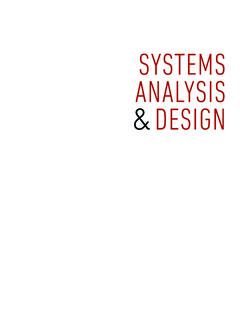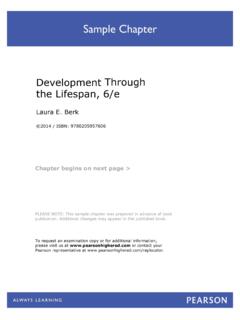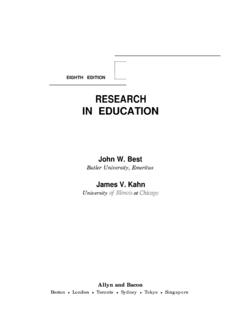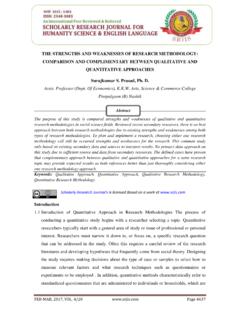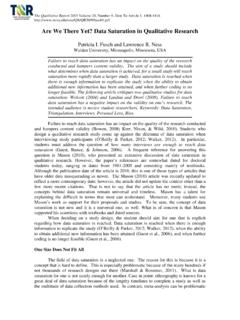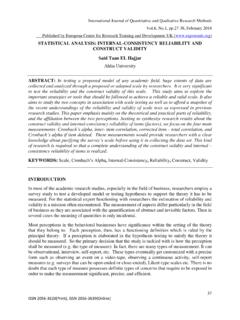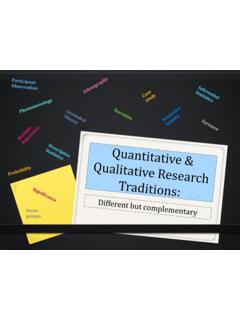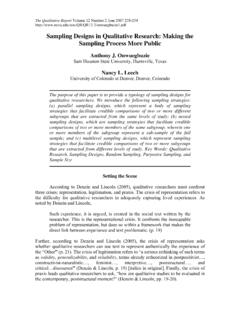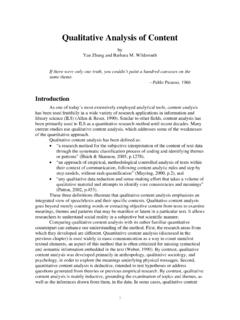Transcription of EDUCATIONAL RESEARCH - Pearson
1 121/12/17 5:33 221/12/17 5:33 PMEDUCATIONALRESEARCHPLANNING, CONDUCTING, AND EVALUATING QUANTITATIVE AND qualitative RESEARCHSIXTH EDITIONJOHN W. CRESWELLU niversity of MichiganTIMOTHY C. GUETTERMANU niversity of MichiganNew York, 321/12/17 5:34 PMDirector and Portfolio Manager: Kevin M. DavisContent Producer: Janelle RogersSr. Development Editor: Carolyn SchweitzerMedia Producer: Lauren CarlsonPortfolio Management Assistant: Casey CoriellExecutive Field Marketing Manager: Krista ClarkExecutive Product Marketing Manager: Christopher BarryProcurement Specialist: Carol MelvilleFull Service Project Management: Katie Ostler, Cenveo Publisher ServicesCover Designer: Cenveo Publisher ServicesCover Image: philsajonesen/Getty ImagesComposition: Cenveo Publisher ServicesPrinter/Binder: Willard, LSC CommunicationsCover Printer: Phoenix Color/HagerstownText Font.
2 10/12 ITC Garamond Std LightCredits and acknowledgments for material borrowed from other sources and reproduced, with permission, in this textbook appear on the appropriate page within the effort has been made to provide accurate and current Internet information in this book. However, the Internet and information posted on it are constantly changing, so it is inevitable that some of the Internet addresses listed in this textbook will 2019, 2015, 2012 by Pearson Education, Inc. All rights reserved. Manufactured in the United States of America. This publication is protected by Copyright, and permission should be obtained from the publisher prior to any prohibited reproduction, storage in a retrieval system, or transmission in any form or by any means, electronic, mechanical, photocopying, recording, or likewise.
3 To obtain permission(s) to use material from this work, please submit a written request to Pearson Education, Inc., Permissions Department, One Lake Street, Upper Saddle River, New Jersey 07458, or you may fax your request to of Congress Cataloging-in-Publication DataNames: Creswell, John W., : EDUCATIONAL RESEARCH : planning, conducting, and evaluating quantitative and qualitative RESEARCH / John W. Creswell, University of Michigan, Timothy C. Guetterman, University of : Sixth edition. | Saddle River, New Jersey : Pearson , [2019]Identifiers: LCCN 2017051270 | ISBN 0134519361 Subjects: LCSH: : LCC LB1028 .C742 2019 | DDC record available at 10: 0134519361 ISBN 13: 97801345193641 421/12/17 5:34 PMThis text is dedicated to our students in EDUCATIONAL and health science RESEARCH who through the years at Nebraska and Michigan helped us to understand and apply 521/12/17 5:34 621/12/17 5:34 PMviiPrefaceNEW TO THE SIXTH EDITIONYou will find several key changes in this edition as a result of reader feedback and the careful review of the last edition by anonymous external reviewers.
4 We have broadened the examples beyond teacher education to reflect the increas-ingly diverse disciplines and subdisciplines in EDUCATIONAL RESEARCH . We searched for examples of EDUCATIONAL RESEARCH in fields such as program evaluation, multicultural RESEARCH , counseling, school psychology, learning and cognition, nutrition, sports psychology, education in the professions, and other fields. Another focus of the revision was to emphasize technology [ , use of online pro-grams for a table of random numbers, use of online surveys, various databases avail-able (like Google scholar or Web of Science), reference tools (like EndNote), and cell-phone random digit dialing]. Coverage of reviewing the literature has been expanded with an emphasis on current literature database searches, reference management software, and how to synthesize findings from a literature review.
5 Quantitative RESEARCH methods are updated to cover mediating variables, use of online surveys, and additional statistical methods such as intraclass correlation coef-ficients. We provide a new example of performance assessment and step-by-step examples to calculate t-test and chi-square statistics. Coverage of quantitative designs is expanded to include causal inferences in experi-mental designs and more detail about causal comparative RESEARCH and single-subject designs. We provide examples of threats to validity in experimental RESEARCH . The chapter on survey RESEARCH is substantially updated to reflect the use of online sur-veys, methodological considerations, and sources for more information. The chapters on qualitative RESEARCH are also updated, including coverage of qual-itative data analysis software and recent developments in qualitative methods.
6 This edition includes a table comparing different approaches to grounded theory, new ethnographic study examples, and developments in narrative RESEARCH . The mixed methods chapter is substantially updated to reflect methodological developments, in particular the discussion of integration of qualitative and quan-titative data. We added recent examples of mixed methods RESEARCH using con-vergent, explanatory sequential, exploratory sequential, and experimental mixed methods designs. References are substantially updated to give readers the newest thinking on RESEARCH methods as other writers have updated the original editions of their 721/12/17 5:34 PMviii PREFACE Although the sample articles from the fifth edition remain the same, many older studies mentioned throughout the text have been updated with current RESEARCH .
7 As with the previous edition, the sample articles are annotated to help readers identify important RESEARCH FOR EDUCATIONOne of the most visible changes in the new edition, also one of the most significant, is the expansion of the digital learning and assessment resources embedded in the etext and the inclusion of MyLab in the text. MyLab for Education is an online homework, tutorial, and assessment program designed to work with the text to engage learners and to improve learning. Within its structured environment, learners practice what they learn in the eText, test their understanding, and receive feedback to guide their learning and ensure their mastery of key learning outcomes. The MyLab portion of EDUCATIONAL RESEARCH , Sixth Edition, is designed to help learners: (1) understand the basic vocabu-lary of EDUCATIONAL RESEARCH ; (2) acquire hands-on experience in reading and evaluating RESEARCH articles; and (3) get guided practice in conducting RESEARCH , including making key decisions with regard to RESEARCH design and statistical analysis.
8 The resources in MyLab for use with EDUCATIONAL RESEARCH include: Self-Check assessments with feedback throughout the eText help readers determine how well they have mastered content. Application Exercises Understanding Concepts and Evaluating RESEARCH Articles allow readers to apply the basic RESEARCH concepts they ve just learned by identifying key elements of published studies or considering how the concepts influence plan-ning a new study. Application Exercises Reading RESEARCH provide readers with scaffolding to read and evaluate published RESEARCH articles of the types discussed in the target PHILOSOPHY OF THE TEXTThe philosophy that guided the development of this text is twofold. First, RESEARCH involves a process of interrelated activities rather than the application of isolated, unre-lated concepts and ideas.
9 Educators practice RESEARCH following a general sequence of procedures from the initial identification of a RESEARCH problem to the final report of RESEARCH . This means that understanding the sequence or flow of activities is central to inquiry. Thus, the text begins with specific chapters devoted to each step in the process of RESEARCH and the inclusion of concepts and ideas within this , the EDUCATIONAL researcher today needs a large toolbox of approaches to study the complex EDUCATIONAL issues in our society. No longer can we, as educa-tors, use only experiments or surveys to address our RESEARCH problems. Educators in this new century whether conducting RESEARCH or reading RESEARCH to self-inform need to know about quantitative, qualitative , and mixed approaches to inquiry and to develop an in-depth understanding of the multiple RESEARCH designs and procedures 821/12/17 5:34 PM PREFACE ixused in our studies today.
10 In each step in the process of RESEARCH , this text will intro-duce you to quantitative, qualitative , mixed methods, and action RESEARCH approaches. Throughout the text, you will learn about the differences and similarities between qual-itative and quantitative RESEARCH . In the last section of the text, you will be introduced to eight distinct quantitative and qualitative RESEARCH designs or procedures that make up the repertoire of the EDUCATIONAL researcher in the quantitative, qualitative , and mixed applications of FEATURESThis text offers a truly balanced, inclusive, and integrated overview of the field as it cur-rently stands. As you will see from the table of contents, the book s coverage is unique in its balanced presentation of quantitative and qualitative RESEARCH .





